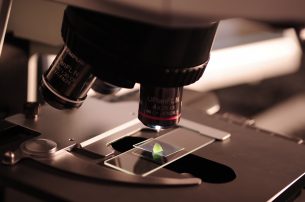Scientists have been wrong. It happens all the time. Randomized controlled trials have produced results that don’t get replicated in full-scale rollouts. The argument for not scientifically testing a retail loss prevention solution tends to focus on two points: Science can be wrong, and science takes time and an investment.
Those are fair criticisms, but what comes next isn’t so fair: “…So why not just trust your gut and experience and implement what you think is best?”
Perfection is a difficult thing to be compared to, but a fair one. If the above line of reasoning ended with “So why not do something perfect instead?”, that would be a compelling argument. Even “So why not do something just as good, but easier” would win the day. However, “Option A isn’t perfect, so you might as well choose an even worse option B” is not compelling.
Perfection does exist in a scientific study. It happens when your sample size matches the entire population of interest, and the construct you’re measuring exactly matches your dependent variable’s construct operationalization. For example, if everyone responds, the US census is a perfect scientific study. The population of interest is every US household; the sample size is every US household. The construct of interest is number of residents per dwelling, etc; the dependent variable construct operationalization is a perfect match.
In reality, other factors such as data collection error, dishonesty, and non-participation will ruin its perfect record, but it’s about as close to a perfect large-scale study that we see. It’s also incredibly time and resource intensive. So in almost all research, we make compromises:
Sample Size: We can’t test in every single store. So we sample the population randomly or in a stratified random format to ensure our results have as much external validity as possible. Sacrifice External Validity
Time: Studies can’t last forever. When we reduce sample size, we require more time to collect sufficient data. Sacrifice External Validity
Dependent Variables: Actual shrink is impossible to measure. We conduct cycle counts etc to approximate as closely as possible. Sacrifice Construct Validity
The scientific method isn’t about being right 100 percent of the time. It’s about having the best chance possible of being right. When you reach the Results section of a research report, you’ll find that the language of science/statistics articulates that goal clearly. Results are expressed as statistical significance values, such as “p<.05”. This essentially means “Based on all parameters of this test, there is less than a 5 percent chance that these results occurred by random chance and that the proposed independent variable (usually a solution) does not significantly affect the dependent variable (usually shrink).” The longer and larger a study is, the more confidence we will have in the outcome.
Is “95 percent sure” perfect? Nope. Does “95 percent sure x caused y here” mean “x will also cause y in similar but non-identical circumstances”? Nope. But, to date, is the scientific method our best guess? Is it what we trust to use testing life-saving drugs? Should you be using the scientific method in retail loss prevention and demanding randomized controlled trials whenever possible? 100 percent.



